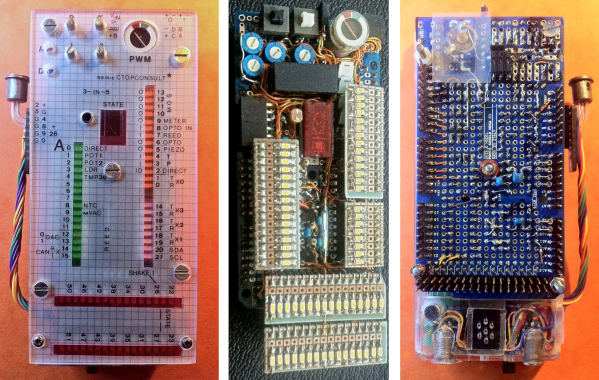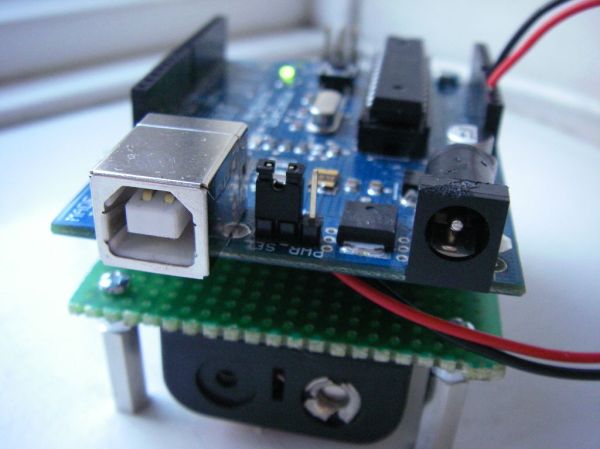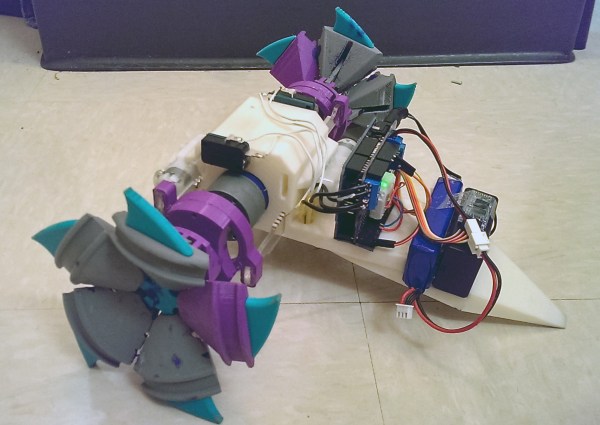What doesn’t this Arduino Mega shield have? Ponder that as you realize that it doesn’t just attach itself to the pin headers, but uses every single one of the mega’s connections.
This isn’t a bunch of components kludged together either. [Carsten] is an a EE and that explains a lot of the really great choices he made like buffering, opto-isolation, and the clean assembly despite a schematic that’s so busy it’s difficult figure out where to start.
So, what does it do? Looks like a one-stop-shop for quick prototyping needs. For instance, there’s a pushbutton, toggle-switch, and a couple of trimpots for quick and easy input. At the center of the board is a 7-segment display, and multiple rows of LED bar displays (assembled from SMD components and protoboard) to provide feedback to the user.
There are also a number of sensors at the party, including a mercury shake sensor, temperature sensor, microphone, thermistor, and light dependent resistor. If what you need isn’t on the board there are multiple options for connecting external gear including opto-isolated input and output, and a LEMO for digital I/O with another for analog. All of that and we forgot to mention the moving coil voltmeter that measures PWM.

















